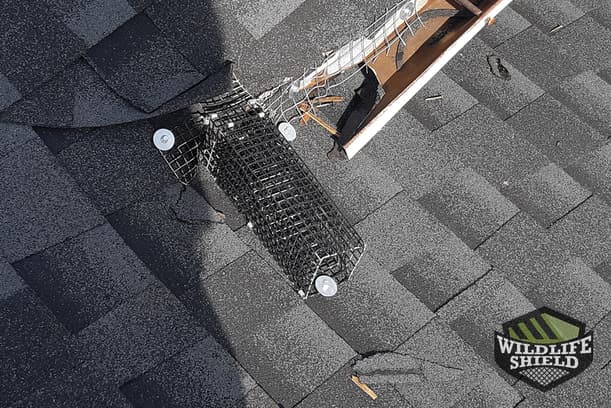The initial call to the property was for a squirrel in the attic of a home in Scarborough along with the possibility of attic mice. Consistent activity in the attic was heard for an extended period. A technician was sent out to inspect for an opening and to exclude with a one-way door to humanely evict the animal from the space or to treat and exterminate the mice.
Scarborough, GTA:
Scarborough is one of the largest individual parts of Toronto and stretches all the way from Victoria Park to the lakefront. On the west it abuts East York and the Danforth and to the north is Pickering. It’s a truly massive place with a great deal of both residential and industrial developments. Scarborough was first settled in 1790, earlier than many other villages outside of FortYork. The area grew rapidly from a small number of villages and farming communities to a multicultural metropolis of industry and development. While it was joined with Toronto for 14 years and then became a burrow again it is now its own city and was only amalgamated into the greater Toronto area in 1998, the very last borough to join the city.
Exterior Inspection
The initial inspection of the home revealed insulation on the ground, this insulation was from the roof and is a very clear example of a sign of animal entry. The technician went on to the roof to inspect and found a very large hole in the drip edge as well as two other entryways on the front and back of the upper roof. These locations need to be sealed and the main entryway requires a one-way door to ensure the animal in the attic has only one way to vacate. In situations where there are other entryways or areas that could easily be a secondary entranceway, the exclusion must be performed or the animal will continue to occupy the attic space. When dealing with wildlife and pests it is important to remember that prevention is key. Multiple feet of the wooden drip edge were damaged and accessible.


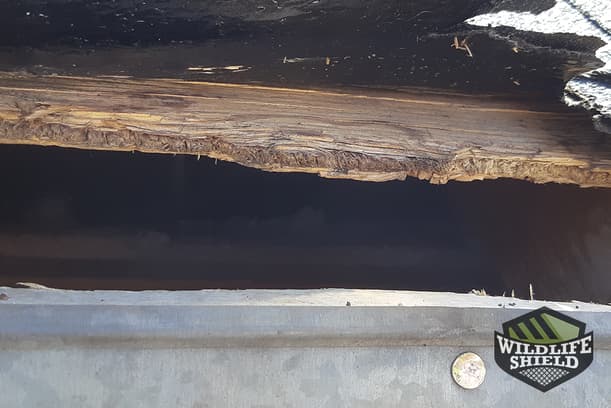
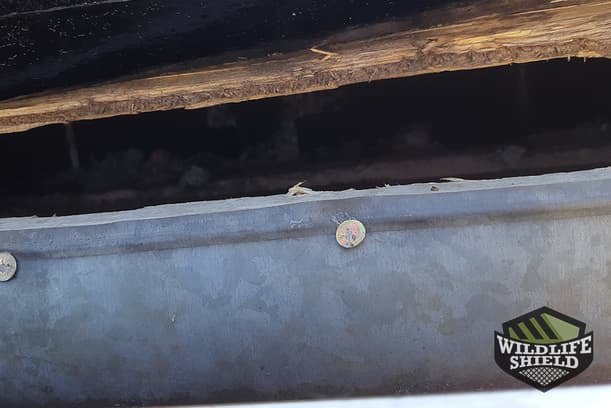
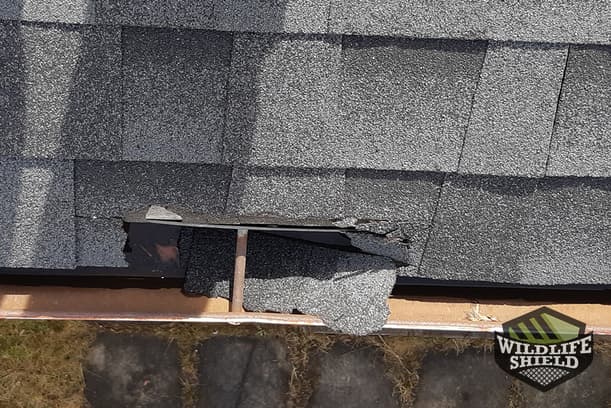
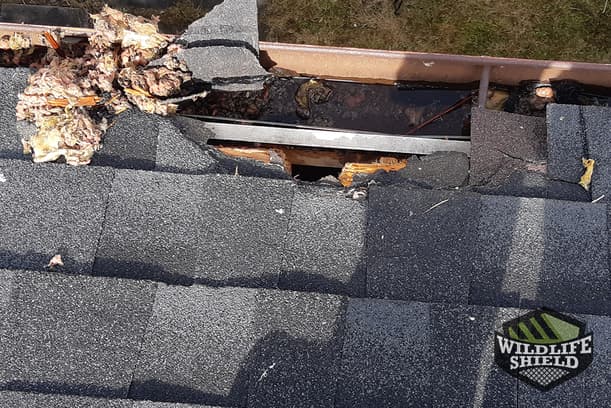
Initial Measures
The initial measures taken by the technician included the installation of a one-way door to allow the animal to humanely vacate the attic while preventing it from re–entering. This process can take three to ten days. The technician also excluded a number of possible entryways on the roof. The main problem area was that the full drip edge was very open to animal access as is evident from the images. The reason for further exclusion, or the sealing of holes, is to prevent the animal in the attic from accessing other areas to make a new entryway but to act as a barrier to future wild animal ingress.
Proposed exclusion
The proposed exclusion by the technician was extensive. It started with the sealing of the four feet of severely damaged drip edge as well as the openings on either side of the roof. He then installed the one-way door at the main entrance which was a soffit/drip edge/roof intersection at a corner of the roof where access for any small animal would be easy to accomplish. The one-way door allows the animal to vacate the attic without being harmed but also prevents the animal from re–entering the attic.
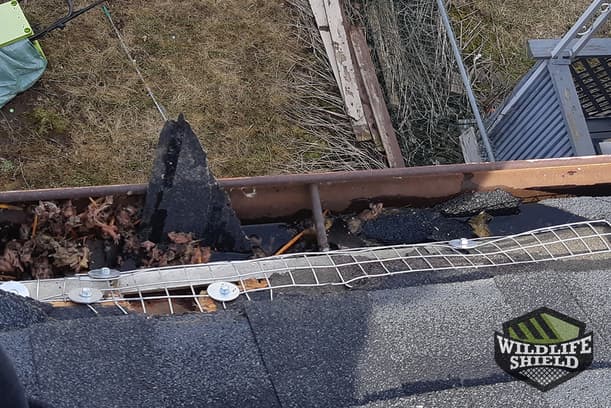
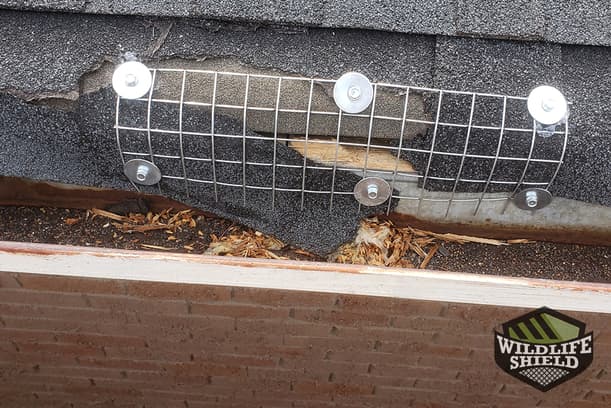
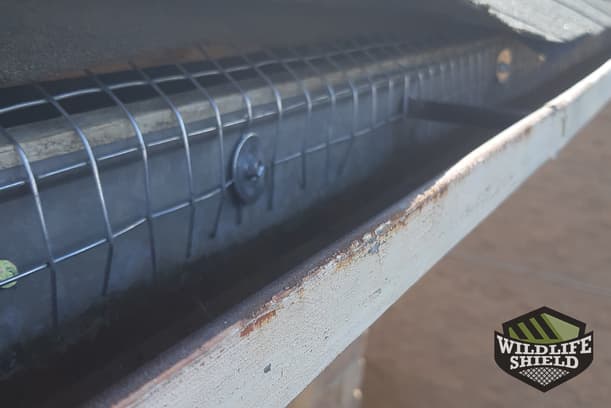

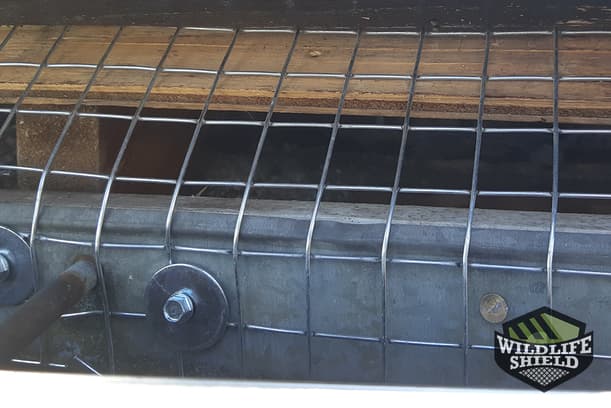
Conclusion
In conclusion, the drip edge is a very common area for animals to enter from. In this case, the drip edge was not fully extended down to the eavestrough and as such there were a plethora of possible animal entry points. The squirrel was evicted from the attic and the one-way door was removed from the roof vent which was then fully excluded. The house was effectively protected from rodent and wildlife break–ins and the customers were pleased with the results. No mice were found in the attic space at the time of our work.

